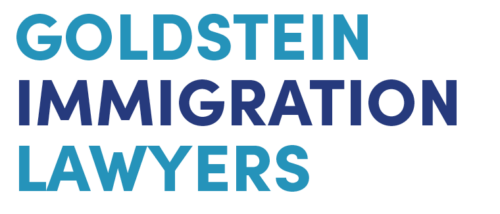We understand the US visa application process is complicated, especially when things like Visa Bulletin retrogressions happen. If you want to live or become a citizen of the United States, it's important to know how this can affect your visa application.
Whether you're applying now or getting ready to start, knowing about Visa Bulletin updates and your options can help you reach your immigration goals. This blog post aims to explain the monthly movements of the Visa Bulletin and give practical advice to help you deal with delays and uncertainties. Let’s begin!
What is Visa Bulletin Retrogression?
Visa retrogression happens when the Visa Bulletin moves backward. When a priority date moves backward, cases that were once moving forward in the immigration process suddenly can't progress.
This occurs when the number of US visa applicants exceeds the available visas for certain categories and countries for the month. Visa retrogression typically occurs when the United States nears the end of the fiscal year.
Why Does Visa Bulletin Retrogression Matter?
Understanding Visa Bulletin retrogression is important because it can cause delays in your visa process. Visa retrogression occurs when the cut-off dates move backward. This means you could suddenly become ineligible to apply for a visa or wait longer for your visa to be processed.
Visa retrogression happens when the Department of State decides there are already enough visa applications to meet the year's allocation by September 30th. The cut-off date for any immigrant visa category moves forward only when the Department of State decides more visas are available for that category.
Final Action Dates (FAD) Chart
Let's look closer to see how Visa Bulletin retrogression in the Final Action Dates chart might affect you:
- Delays in Visa Processing: Changes in FAD due to retrogression can delay your visa application process.
- Extended Waiting Time: If your priority date moves backward, you may have to wait longer for your visa to be processed.
- Uncertainty in Visa Application Planning: Retrogression makes planning for work, travel, or family difficult.
Adjusting Your Plans: If your plans were based on your original visa eligibility date, you may need to change them if Visa Bulletin retrogression happens.

Dates for Filing (DFF) Chart
This is how Visa Bulletin retrogression in the Dates for Filing chart could affect you:
- When You Can Apply: The DFF chart shows when you can start applying for your visa.
- Impact of Retrogression: Retrogression may affect when you can begin the visa application process.
- Waiting for Your Visa: If your priority date moves backward in the DFF chart, you may need to wait longer.
- Planning Your Application: Understanding the DFF helps you plan when to apply for your visa, even if there are delays due to retrogression.
Roles of State Departments in Visa Application Processing
We’ve included a brief outline of the US Department of State's roles and responsibilities, including US embassies, to help you further understand Visa Bulletin retrogression. Knowing what these departments and US embassies do may help you during the visa application process and provide enough information to get assistance when needed.
Department of State (DOS)
- Visa Issuance: Oversees visa issuance at US embassies and consulates worldwide.
- Visa Policy: Sets the application rules for visa applicants.
- Visa Bulletin: Updates monthly to show when visas are available.
- Consular Processing: Handles visa interviews and decisions at embassies and consulates.
United States Citizenship and Immigration Services (USCIS)
- Adjustment of Status: Handles applications to become a permanent resident in the US
- Form I-485: Processes applications to adjust status.
- Work Authorization: Reviews requests for work permits.
- Interviews: Conducts interviews for status adjustments.
Department of Homeland Security (DHS)
- Customs and Border Protection (CBP): Manages entries at US borders.
- Immigration and Customs Enforcement (ICE): Enforces US immigration laws.
- Visa Security: Works with DOS on visa security.
Department of Labor (DOL)
- Labor Certification: Reviews job applications for certain visas.
- Prevailing Wage Determination: Sets minimum wages for visa categories.
- H-1B Visa Program: Approves employers to hire foreign workers.

National Visa Center (NVC)
- Visa Preprocessing: Receives approved visa petitions from USCIS and prepares them for consular processing.
- Document Collection: Collects necessary documents from applicants to complete visa processing.
- Case Management: Manages visa cases until they are ready for interview scheduling at embassies or consulates.
Role of US Embassies and Consulates
- Visa Processing: Accepts and processes visa applications.
- Interviews: Conduct interviews to decide on visa approvals.
- Visa Issuance: Gives visas to approved applicants.
- Customer Service: Helps applicants through the visa process.
Resolve Your Administrative Processing Delay
Acting fast is important to avoid wasting additional time finalizing your visa. If your visa application is in administrative processing and your category and country are current, you can act quickly with a Writ of Mandamus lawsuit for visa delays.
It’s important to remember that USCIS will only make a decision on your visa application once your priority date becomes active again.
Get advice from a Boston Writ of Mandamus lawyer for quick legal action. You can resolve your administrative process delay before Visa Bulletin retrogression can disrupt your immigration plans any further.
Secure Your American Dream!
Visa Bulletin retrogression can cause further visa processing delays in your immigration plans. You can avoid further delays by staying informed about your visa category's status and acting quickly. A mandamus lawsuit has the power to get a decision on your administrative processing delay before Visa Bulletin retrogression.
Take control of your future by completing our online questionnaire to get a mandamus lawsuit consultation. Don't wait—secure your visa and pursue your American dream today!
Posted in: Blog
